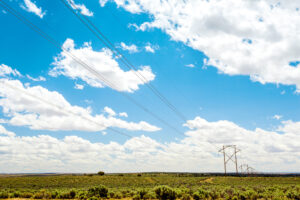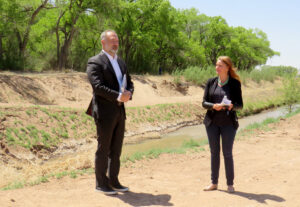Study finds high share of methane emissions from low-producing oil and gas well sites

As the U.S. Environmental Protection Agency develops policies for methane emissions from oil and gas production, environmental advocacy groups have a new tool to back their calls for regular leak detection and repair at all sites, including those that produce limited amounts of oil and gas.
Scientists with the Environmental Defense Fund published a study this week in Nature Communications that found while small-producing well sites may, individually, have relatively low emissions, when looked at as a whole, they account for a disproportionate share of methane emissions.
While scientists from an environmental advocacy group that has actively been lobbying for stricter regulations for low-production facilities conducted the study, it was published in a peer-reviewed paper. That means other scientists evaluated the methodology used and looked for potential errors.
During a press conference on Wednesday, the lead author Mark Omara explained the researchers’ methodology, which relied heavily on previously published peer-reviewed studies.
Omara said the researchers defined a low-producing well site as one that produced less than 15 barrels of oil equivalent. A well site, he explained, does not refer to the well head or the well itself. Instead, a well site can have multiple wells on it.
The scientists estimate that 75 percent to 80 percent of the well sites in the country are low producing and, based on 2019 data, only about six percent of the total production in the United States comes from these low-producing well sites.
The findings are important because the U.S. Environmental Protection Agency may exempt low producing well sites from some leak detection and repair requirements that larger facilities face. Rosalie Winn, a senior attorney for EDF, said the EPA proposal released last fall included an exemption from regular and repeated leak detection for small well sites that are considered to have a low potential to emit. She said the EPA has indicated that it will revisit those requirements during a supplemental action this summer.
The newly-adopted ozone precursor rules in New Mexico require regular leak detection and repair regardless of the size, or production, of the well site.
Industry groups have advocated for less stringent requirements for these low-producing well sites because the sites tend to have little economic value and regular leak detection can be expensive.
But EDF’s study found that companies with at least 100 wells own and operate a large share of low producing well sites as compared to small producers, such as mom and pop operations.
EDF has been active in monitoring methane emissions in New Mexico’s Permian Basin, including using satellites. However, David Lyon, a senior scientist with EDF, said it is harder to detect emissions from low-producing sites because leaks tend to be smaller.
This article was originally posted on Study finds high share of methane emissions from low-producing oil and gas well sites







